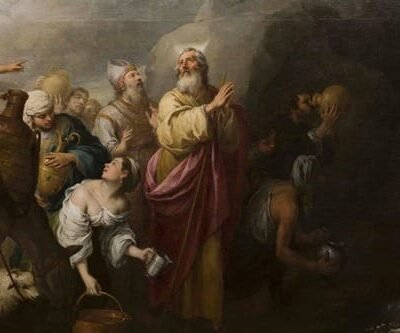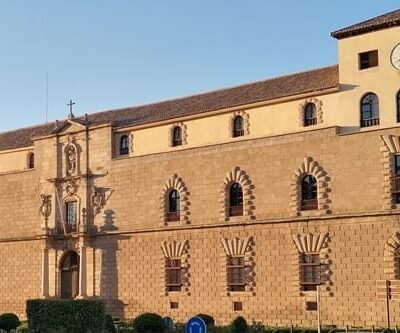Visiting El Greco Museum (House) in Toledo, to discover unique aspects of the life of this eccentric Renaissance-era painter
When visiting the beautiful city of Toledo, one of the must-see attractions is the El Greco Museum. This institution, formerly the Casa-Museo del Greco, dedicates its activity to the artist Doménikos Theotokópoulos, worldwide known as El Greco.
“The language of art is celestial in origin and can only be understood by the chosen.”
El Greco
Who was El Greco, and why did he move to Spain?
As his nickname states, El Greco was a Greek painter, sculptor, and architect, active during the late 16th and early 17th centuries. He is most celebrated for his unique painting style, which combined elements of the Renaissance and the Byzantine tradition. He is also one of the most important figures of the Spanish Renaissance.
Post last updated on November 26, 2024 (originally published on January 13, 2023) by Roberta Darie.
After a period in Italy, El Greco moved to Toledo, searching for new artistic opportunities. This city was a cultural center at the time and had a thriving creative community. Additionally, it was a place of great spiritual significance. It was home to many religious institutions. One of them was the famous Cathedral of Toledo, which would have been an essential incentive for El Greco.
Furthermore, with its Muslim, Jewish, and Christian history, Toledo represented a blend of cultures and a great source of inspiration for the artist.

Where did El Greco live while in Toledo?
So, El Greco chose Toledo as his home during the latter part of his life. They do not know precisely where, but scholars believe he lived in the Jewish Quarter, near the properties of the Marquis of Villena. Here, he produced the majority of his work.
In the early 20th century, the Marquis of Vega-Inclán, a prominent patron and art dealer, bought several ruined houses in the Jewish Quarter and restored them, intending to recreate what might have been El Greco’s house in Toledo.
These “houses of the Duchess of Arjona” were close to the properties where El Greco is believed to have lived. And so, the Marquis converted them into the “house museum of El Greco.”

The Marquis of Vega-Inclán and the “house” of the painter
After buying and restoring these ruined houses in the Jewish Quarter of Toledo, in 1911, the Marquis of Vega-Inclán created the museum. The mansion recreated a 16th-century Spanish environment and what might have been El Greco’s house.
The building was divided into two parts. The first was the recreation of El Greco’s house, arranged around a courtyard. The second was the museum in itself, newly constructed. Furthermore, a chapel was added in 1925 to contextualize Saint Bernardine’s altarpiece with a coffered ceiling.
The Marquis of Vega-Inclán was a patron of the arts and a key character in promoting and recovering El Greco’s figure. As Royal Commissioner of Tourism between 1911 and 1928, he developed various cultural projects. These included the Museo del Greco, Casa de Cervantes in Valladolid, and the Museo del Romanticismo in Madrid. He also played an essential role in the creation of the Museo Sorolla.
El Greco: The Altarpiece of San Bernardino with painting and architectural structure of gilded wood (1603), Museo del Greco, Toledo.

In the 1950s and 1960s, the Vega-Inclán Foundation, managing the legacy of the Marquis, sought to renovate the concept and made several institutional changes. They acquired new pieces and changed part of the museography to make it more attractive to the growing touristic public of the time.

Artworks you can see at the museum
Nowadays, the museum is under the management of the Spanish Ministry of Culture and the General Directorate of Fine Arts.
It is home to approximately 20 paintings by the artist, including the Apostolado series (one of his works of higher quality), Las lágrimas de San Pedro. And also, the portraits of Diego de Covarrubias and his brother Antonio, the Retablo de San Bernardino on loan from the Prado Museum, and Vista y plano de Toledo, considered the most significant piece in the museum.
In 2021, the Ministry of Culture acquired the painting Crucifixión for this institution. This was the first painting by El Greco added to the collection since its founding.
Furthermore, the museum also has a notable collection of works by Luis Tristán, considered El Greco’s best student, as well as works by Jorge Manuel Theotocópuli, Sánchez Coello, Bartolomeo Passerotti, Herrera el Viejo, Juan Bautista del Mazo, Valdés Leal, Joaquín Sorolla, and Raimundo de Madrazo.
Many of these paintings were intended for the “Museo de Arte Español”, a project conceptualized by the Marquis of Vega-Inclán, but never realized. At least 25 of them are now on loan at the Prado Museum in Madrid.

Visiting the El Greco Museum
Visiting the El Greco Museum is a must-do for art lovers and history buffs. The museum’s location is in the heart of Toledo, within the city’s beautiful medieval walls.
This makes it easy to combine a visit to the museum with a stroll through the city’s charming streets and a stop at some of its other famous landmarks. It is also near the Church of Santo Tomé (at a 2-minute walk), where you can admire El entierro del Conde de Orgaz, one of El Greco’s masterpieces.
The length of time it takes to visit the Museo del Greco in Toledo can vary depending on your interests and how much time you want to spend viewing the exhibits. Generally, most visitors spend around 1 or 2 hours. So, this activity can easily fit into your daily itinerary.
To summarize, the El Greco Museum in Toledo is a must-see for any art lover visiting the city. So, make sure to add it to your list of things to see and do, and enjoy the works of one of the greatest painters of the Spanish Golden Age.




